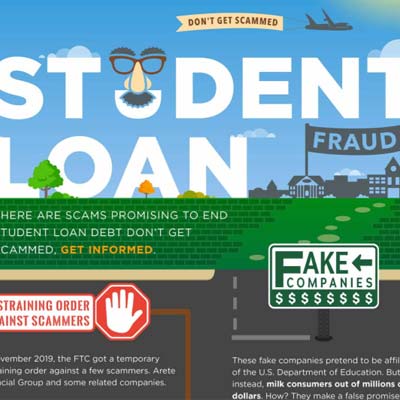Now that college acceptance letters have started to roll in, students will soon begin receiving financial aid award letters from their prospective colleges, as well. This vital component of the college planning process can be a bit confusing, especially when colleges do not use the Financial Aid Shopping Sheet created by the U.S. government.
This standardized form is meant to help students clearly understand what is being offered and allows them to easily compare award packages from different schools.
Unfortunately, fewer than 2,000 colleges to date have voluntarily adopted this form, which means some students may be unsure of what is actually being offered in terms of financial aid.
First of all, it’s important that students understand that not all financial aid is free money for college. In fact, most financial aid packages include a combination of gift aid and self-help aid. And this is where many students get lost or confused.
They see the total amount being offered, but don’t clearly understand what they are actually taking on in terms of potential debt. Before agreeing to any financial aid package, students must understand the distinct differences between the two types of aid. Here is a brief overview of each, and what students may see as part of their financial aid award packages.
GIFT AID
Gift aid, simply put, is free money for college. Students typically receive gift aid based on financial need, academic achievement, or for other skills and talents. Here are the major types of gift aid commonly offered to students:
Grants
In general, grants are awarded to students based on financial need. This may include Pell Grants and Federal Supplemental Educational Opportunity Grants, as well as grants offered through state and institutional programs. Students must complete the Free Application for Federal Financial Aid (FAFSA) so colleges can determine their eligibility for these awards.
Some colleges may even offer small grants to students who have done well academically, especially during the summer semester, if there are additional funds available. Students who lost a parent as a result of military service in Iraq or Afghanistan after 9/11 may also be eligible for the Iraq and Afghanistan Service Grant, even if their Expected Family Contribution (EFC) is too high for a Pell Grant.
Scholarships
Students can receive scholarships from a variety of sources and for a variety of reasons. The most common scholarships awarded by colleges are for financial need or academic achievement. Students may receive an award based on their SAT or ACT scores, class rank, grade point average (GPA), as well as the ethnic background, or their intended major.
In addition, student athletes at an NCAA Division I or Division II school may receive a scholarship for their particular sport. Those students who have a special talent, such as music or theater, may also receive a scholarship to help offset their costs.
It’s important to note that students can also receive scholarships from state agencies and private providers, such as local businesses and charitable organizations, though these may not be included on the financial aid award letter from their prospective schools.
Students must report any outside scholarships received to their college’s financial aid department, as it will be counted toward the total financial aid allowed and must not exceed the Cost of Attendance (COA).
SELF-HELP AID
Self-help aid is money awarded to students that must be paid back, or requires something in return, such as volunteer hours or a certain number of work hours. This includes the following categories:
Work Study
This need-based financial aid program is offered through colleges and supplemented by the federal government. Funding is limited, so it’s important that students apply early and indicate their interest when completing the FAFSA. If eligible, students may seek or be assigned part-time work either on or off campus.
The hours are typically very flexible and the money is paid directly to the student. Money earned through work-study programs is not counted as income when students apply for FAFSA the following year, therefore it will not lower their financial aid eligibility.
Some schools offer their own work study program unrelated to the federal program and wages earned will count toward student income reported on the FAFSA.
In all cases, it’s important to know that these grants must be earned through work and that the award will not be directly applied to a student’s tuition bill.
Student Loans
Students may be offered federal loans, private loans, or a combination of the two. Unlike gift aid and work-study programs, the money received through loans must be repaid.
In general, federal student loans offer lower interest rates and have more flexible repayment terms for students. There are two federal student loan programs available. The largest, the Federal Direct Student Loan Program (FDLP), includes Direct Subsidized and Direct Unsubsidized Loans, Direct PLUS Loans, and Direct Consolidation Loans. The other, the Federal Perkins Loan Program, is a school-based loan program that is awarded to students who show exceptional financial need.
Eligible students may receive these loans regardless of their credit history, except in the case where a parent or graduate student is requesting a PLUS Loan.
Private student loans, on the other hand, require a good credit score. Most students will also need a cosigner with good credit to obtain a private student loan. It’s important that students review the interest rate, loan fees, Annual Percentage Rate (APR), length of repayment, and total cost of the loan before signing any documents.
Each lender is different, and some may have more favorable terms or offer repayment incentives, so students should compare offers carefully before making a decision.
Private loans should only be used when all other forms of financial aid have been exhausted, and students should only borrow the minimum amount required.
Students may find that their financial aid packages fall short of covering all of their expected expenses, especially if they have a high EFC and do not qualify for need-based assistance.
If there have been changes in their income, a recent hospitalization, or other factors that may have reduced their available college savings, students should contact their college financial aid office and request a review. In some cases, students may be awarded additional financial aid.
For those who still find themselves lacking the necessary funding for college, I suggest looking into other options, such as employer tuition assistance or reimbursement programs, or using a free scholarship search.













